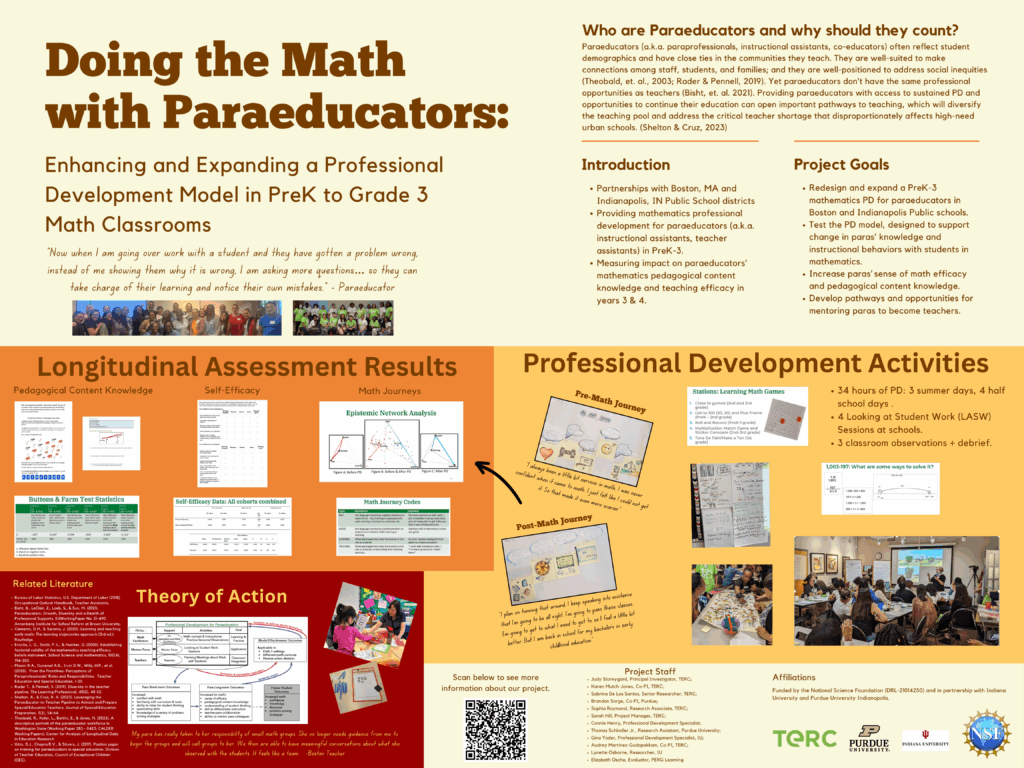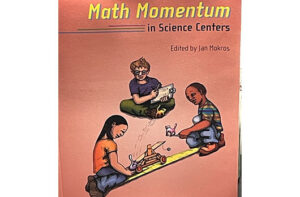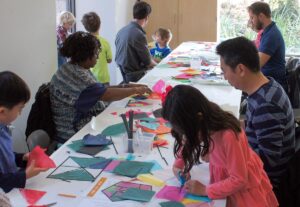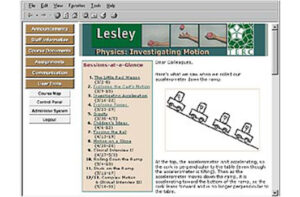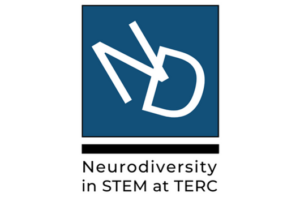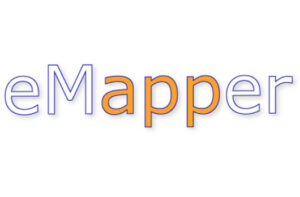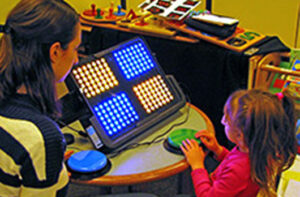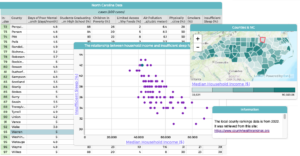Doing the Math with Paraeducators: Enhancing and Expanding and Sustaining a Professional Development Model in PreK to Grade 3 Math Classrooms
A Research and Development Project
Project Staff:
Judy StoreygardKaren Mutch-Jones
Audrey Martínez-Gudapakkam
Sabrina De Los Santos
SummaryAddressing mathematics professional development (PD) needs of PreK-3 paraeducators is critical, as their numbers continue to rise, and their duties expand beyond routine and clerical tasks. Paras often provide academic support in early math skills, which can be powerful predictors of academic achievement for students.
Prior Work: Our exploratory Doing the Math project (DRL-1621151) staff developed and tested a PD model, responsive to paras’ working in a diverse urban district. Results of the twenty-three participants showed increased confidence and involvement in math instruction, greater facility using inquiry-based math resources, and improved strategies for supporting student thinking and addressing math learning challenges. Overall, there was a notable shift as paras moved from a monitoring role to an educator role, indicating the potential for opening pathways to teaching for these educators and diversifying the teaching pool. This exploratory research resulted in a proof of concept, with a PD model that is ready for testing in a wider range settings and school districts.
Enhancing and Empowering: Doing the Math: Led by TERC and Indiana University–Purdue University Indianapolis (IUPUI) and supported by the National Science Foundation (DRL-2101425), this new phase of work, Enhancing and Empowering: Doing the Math, will refine core PD activities for paraeducators and enhance the PD model in the following ways:
- expand the participant cohort to include PreK paraeducators;
- provide PD to math facilitators so they can support teacher implementation;
- revise the structure of PD by offering school-based sessions to build a school community of learners; and
- adding teacher PD to foster collaboration with paras and create opportunities for them to support paras’ instructional practice.
Through this project, we will collaborate with paraeducators in two diverse urban districts, Boston, MA Public Schools, and Indianapolis, IN Metropolitan School District Washington Township. We will study how well the project creates professional learning communities, influences para instructional practice, and develops para-mentors and teachers who support their colleagues. Our outcomes research will measure the impact on paraeducators’ confidence, mathematics pedagogical content knowledge, and teaching efficacy. Findings will also identify how to create pathways that support para entry into teaching careers and leadership roles that will share with other districts.
It is our belief that providing paraeducators with access to sustained PD and opportunities to continue their education can open important pathways to teaching which may diversify the teaching pool and address the critical teacher shortage that disproportionately affects high-need urban schools (Walker, 2019).
Videos
Doing the Math with Paraeducators from videohall.com on Vimeo. Rep Pressley from Judy Storeygard on Vimeo.
Show More
Show Less
https://vimeo.com/340735946 Mayor Walsh from Judy Storeygard on Vimeo.
DRK12 PosterHands On! ArticleDoing the Math with Paraeducators
Feature // By Judy Storeygard, Karen Mutch-Jones, Simone Ngongi-Lukula 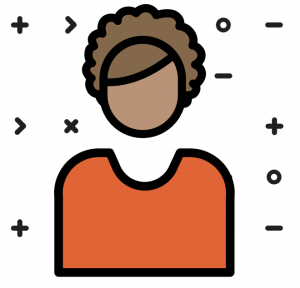
Addressing mathematics professional development (PD) needs of PreK-3 paraeducators is critical, as their numbers continue to rise, and their duties expand beyond routine and clerical tasks. Paras often provide academic support in early math skills, which can be powerful predictors of academic achievement for students.
Prior Work: Our exploratory Doing the Math project (DRL-1621151) staff developed and tested a PD model, responsive to paras’ working in a diverse urban district. Results of the twenty-three participants showed increased confidence and involvement in math instruction, greater facility using inquiry-based math resources, and improved strategies for supporting student thinking and addressing math learning challenges. Overall, there was a notable shift as paras moved from a monitoring role to an educator role, indicating the potential for opening pathways to teaching for these educators and diversifying the teaching pool. This exploratory research resulted in a proof of concept, with a PD model that is ready for testing in a wider range settings and school districts.
Enhancing and Empowering: Doing the Math: Led by TERC and Indiana University–Purdue University Indianapolis (IUPUI) and supported by the National Science Foundation (DRL-2101425), this new phase of work, Enhancing and Empowering: Doing the Math, will refine core PD activities for paraeducators and enhance the PD model in the following ways:
- expand the participant cohort to include PreK paraeducators;
- provide PD to math facilitators so they can support teacher implementation;
- revise the structure of PD by offering school-based sessions to build a school community of learners; and
- adding teacher PD to foster collaboration with paras and create opportunities for them to support paras’ instructional practice.
Through this project, we will collaborate with paraeducators in two diverse urban districts, Boston, MA Public Schools, and Indianapolis, IN Metropolitan School District Washington Township. We will study how well the project creates professional learning communities, influences para instructional practice, and develops para-mentors and teachers who support their colleagues. Our outcomes research will measure the impact on paraeducators’ confidence, mathematics pedagogical content knowledge, and teaching efficacy. Findings will also identify how to create pathways that support para entry into teaching careers and leadership roles that will share with other districts.
It is our belief that providing paraeducators with access to sustained PD and opportunities to continue their education can open important pathways to teaching which may diversify the teaching pool and address the critical teacher shortage that disproportionately affects high-need urban schools (Walker, 2019).
Doing the Math with Paraeducators from videohall.com on Vimeo. Rep Pressley from Judy Storeygard on Vimeo.
https://vimeo.com/340735946 Mayor Walsh from Judy Storeygard on Vimeo.
DRK12 PosterHands On! ArticleDoing the Math with Paraeducators
Feature // By Judy Storeygard, Karen Mutch-Jones, Simone Ngongi-Lukula 
Doing the Math with Paraeducators
Feature // By Judy Storeygard, Karen Mutch-Jones, Simone Ngongi-Lukula 
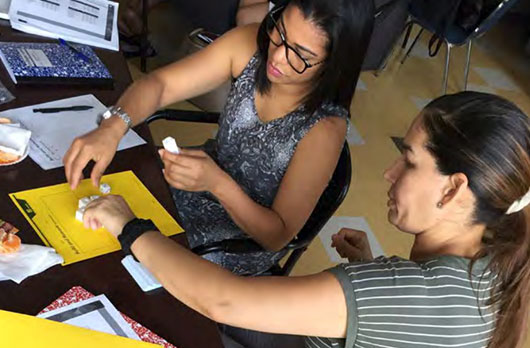
Funder:
National Science Foundation
Award Number:
2101425
Boston Public Schools
Indiana University-Purdue University Indianapolis
Indianapolis Metropolitan School District Washington Township
August 2021 – July 2025
Share This Page:
